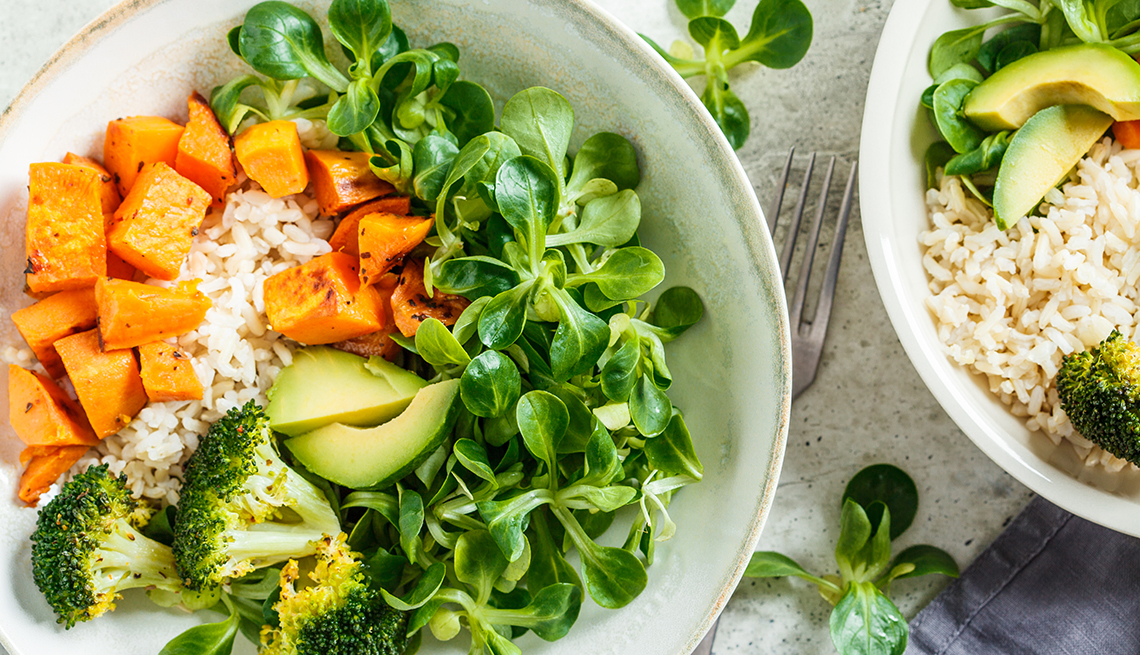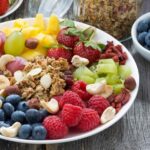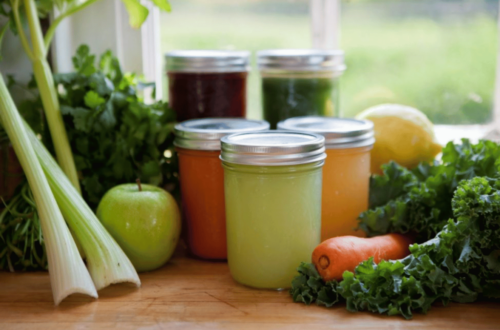Ulcer Treatment Foods
Ulcer treatment foods are important as certain foods can play a supportive role in helping your body heal from a peptic ulcer, which is commonly caused by the bacteria Helicobacter pylori (H. pylori). This infection often requires treatment with antibiotics.
In addition to bacterial infections, long-term use of certain medications, especially nonsteroidal anti-inflammatory drugs (NSAIDs), can also lead to the development of peptic ulcers.
While there is no conclusive evidence to suggest that an ulcer-specific diet can fully treat or prevent ulcers, certain foods are believed to help minimize symptoms and promote healing. These include nutrient-rich options like berries, eggs, lean meats, and whole grains. These foods are gentle on the stomach and provide essential nutrients that support overall digestive health and tissue repair.
On the other hand, some foods and beverages can exacerbate ulcer symptoms and irritate the ulcerated areas of the stomach lining, esophagus, or small intestine. These include fried foods, citrus fruits, and alcohol. These items can aggravate ulcer sores, causing discomfort and potentially hindering the healing process.
By understanding which foods are beneficial and which should be avoided, you can better manage an ulcer and support its healing. A diet that focuses on soothing, easily digestible foods while avoiding known irritants can make a significant difference in both symptom relief and recovery.
Ulcer Treatment Foods to Include in an Ulcer Diet
An ulcer diet is specifically designed to alleviate the symptoms of peptic ulcers, promote healing, prevent flare-ups, and minimize the risk of developing future ulcers. This dietary approach aims to address nutritional deficiencies, provide the necessary nutrients for recovery, and help avoid foods that could irritate the ulcer or contribute to complications.
Additionally, it can help manage related conditions like Crohn’s disease, celiac disease, and bacterial infections, including H. pylori. While individual needs may vary, here are some foods that can be beneficial when following an ulcer-friendly diet. Always consult with your healthcare provider before making significant dietary changes.
- Fruits
Fresh or frozen fruits are excellent additions to an ulcer diet due to their high fiber content and abundance of antioxidants. Certain fruits, particularly those rich in polyphenols, offer additional healing benefits. Berries such as strawberries, blueberries, and raspberries, as well as apples, grapes, and pomegranates, are great choices for their polyphenol content, which may support digestion and reduce inflammation.
However, it’s important to avoid citrus fruits or juices like oranges and grapefruits if they trigger acid reflux or worsen symptoms. For those with sensitivity to acidity, opting for gentler fruits like bananas and melons may be more suitable.
- Vegetables
Vegetables, especially those rich in vitamins and antioxidants, are a vital part of an ulcer diet. Leafy greens like spinach and kale, along with bright red and orange vegetables such as bell peppers and sweet potatoes, provide essential nutrients that support overall health and aid in healing.
Cruciferous vegetables like broccoli, cauliflower, and Brussels sprouts are also excellent choices due to their cancer-fighting compounds and digestive health benefits.
Cabbage, in particular, has been studied for its beneficial effects on digestive health, making it a great addition to an ulcer diet. However, it’s wise to avoid spicy peppers and tomatoes, as they can trigger acid reflux or irritation for some individuals. Also, limit raw vegetables, as they can be harder to digest. Opting for softer, cooked vegetables will be gentler on the stomach.
- Lean Proteins
Protein is essential for healing, and consuming lean protein sources is crucial in an ulcer diet. Skinless poultry, such as chicken and turkey, lean cuts of beef like sirloin or tenderloin, and fish are all excellent sources of protein without excess fat. Eggs, tofu, tempeh, and plant-based proteins from dry beans and peas also provide the necessary building blocks for tissue repair.
Fatty fish like salmon, mackerel, and sardines offer additional benefits by providing omega-3 fatty acids, which have anti-inflammatory properties. These fatty acids may help reduce the inflammation caused by H. pylori infection, potentially aiding in ulcer healing and helping to prevent future ulcers.
Research also suggests that omega-3s may have protective effects against other health conditions, such as heart disease, which could be linked to chronic inflammation from H. pylori infection.
By incorporating these nutrient-dense foods into your diet, you can support your body’s healing process, reduce ulcer symptoms, and help prevent future flare-ups. Always remember to work with your healthcare provider to tailor your diet to your specific needs and symptoms.
- Fermented Dairy
Fermented dairy products, such as kefir and Greek yogurt, are beneficial additions to an ulcer diet. These foods are rich in probiotics, which are live beneficial bacteria that promote gut health. Probiotics help balance the intestinal microbiome, support digestion, and enhance the immune system.
Emerging research suggests that probiotics may play a role in the treatment of peptic ulcers, particularly in combating the H. pylori bacteria, which is often responsible for causing ulcers. In addition to their probiotic content, these dairy products also provide high-quality protein, which is essential for healing and tissue repair.
- Breads and Grains
Whole grain breads, along with whole or cracked grains like oats, quinoa, farro, millet, and sorghum, are excellent sources of fiber. Fiber plays a vital role in digestive health by promoting regular bowel movements and supporting overall gut function.
While fiber itself may not directly prevent ulcers, it contributes to a healthy lifestyle and can help maintain proper digestion. These grains are also nutrient-dense and can provide your body with important vitamins and minerals. Incorporating these whole grains into your diet helps ensure a steady source of energy and keeps your digestive system functioning smoothly.
- Herbs and Spices
Although hot, spicy foods are generally avoided in an ulcer diet due to their potential to irritate the stomach lining, certain mild herbs and spices can be highly beneficial. Some spices not only add flavor but also have healing properties that can aid in ulcer treatment.
Research has shown that specific spices, such as turmeric, cinnamon, ginger, and garlic, possess antimicrobial and anti-inflammatory properties.
These herbs can help combat the H. pylori bacteria, which is linked to the development of peptic ulcers. Additionally, they provide antioxidants that help reduce inflammation, support the immune system, and promote overall digestive wellness. Incorporating these gentle, healing spices into your meals can offer both flavor and health benefits while managing ulcer symptoms.
By including these foods—fermented dairy, whole grains, and specific herbs and spices—into your ulcer diet, you can enhance digestion, reduce inflammation, and support the healing process. Always be mindful of individual sensitivities and consult with a healthcare provider to ensure your diet meets your specific health needs.
Foods to Avoid
When managing a stomach ulcer, it’s crucial to avoid certain foods and drinks that can irritate the stomach lining, increase acid production, and hinder the healing process. Here are some foods and beverages that should be limited or eliminated:
- Alcohol
Alcohol is a known stomach irritant, and its consumption can delay the healing of ulcers. Whether it’s wine, beer, or spirits, all forms of alcohol can increase acid production in the stomach and cause further irritation to the ulcer. It’s best to avoid alcohol completely during the healing process. - Caffeine
Caffeine, found in coffee, tea, and many sodas, can stimulate the production of stomach acid, which may exacerbate ulcer symptoms. It is recommended to cut back or eliminate caffeinated beverages from your diet while managing a stomach ulcer. - Milk
While milk was once thought to soothe stomach ulcers, research has since shown that it actually increases stomach acid production. Although it might temporarily provide relief, milk can lead to further discomfort and may delay healing. Avoid consuming milk during the recovery process. - Certain Meats
Highly seasoned, fatty, or processed meats, such as sausages, lunch meats, and fried proteins, should be avoided. These meats can irritate the stomach and contribute to the production of excess stomach acid. Opt for lean proteins like skinless poultry, fish, and tofu instead. - High-Fat Foods
Foods that are high in unhealthy fats can trigger acid reflux and irritate the stomach lining. It’s best to avoid fatty cuts of meat, cream-based soups, gravies, and certain salad dressings. However, healthier fats from sources like olive oil and avocados are generally acceptable in moderation. - Spicy Foods
Spicy foods, such as chili peppers, horseradish, and spicy condiments, can cause irritation to an ulcer and increase discomfort. While they do not directly cause ulcers, they can exacerbate existing symptoms by irritating the stomach lining and increasing acid production. It’s wise to avoid these if you’re dealing with an ulcer. - Salty Foods
Excessively salty foods, including pickles, olives, and other brined or fermented vegetables, may promote the growth of pylori, the bacteria commonly associated with peptic ulcers. High salt intake has also been linked to an increased risk of ulcer formation, making it important to limit salty foods in your diet. - Chocolate
Chocolate is another food that can stimulate stomach acid production. While it may not directly cause ulcers, it can trigger acid reflux in some people, leading to increased discomfort. If you experience symptoms after consuming chocolate, it may be best to avoid it while healing.
By avoiding these irritants, you can give your stomach the best chance to heal and prevent further irritation. Focus on gentle, easily digestible foods and consult with a healthcare provider to create a dietary plan that supports your recovery.
Foods to Choose for Healing and Stomach Ulcer Relief
Incorporating healing, nutrient-rich foods into your diet can aid in the recovery from stomach ulcers and promote overall digestive health. Here’s a list of foods to focus on:
- Fruits
Fresh or frozen fruits, especially those rich in antioxidants and fiber, support healing. Berries, apples, and pomegranates are especially beneficial for their polyphenol content, which may help reduce inflammation. - Vegetables
Leafy greens, cruciferous vegetables like broccoli and kale, and bright-colored vegetables such as carrots and bell peppers provide essential vitamins and minerals for healing. Cabbage, in particular, has been shown to be beneficial for digestive health. - Legumes
Beans, lentils, and peas are excellent plant-based sources of protein and fiber. They help support digestive function and provide essential nutrients without irritating the stomach. - Lean Meats
Skinless poultry like chicken and lean cuts of beef provide necessary protein for tissue repair and healing. These meats are easy on the stomach when prepared in a non-irritating way (e.g., boiled or baked). - Fish and Seafood
Fatty fish like salmon, mackerel, and sardines are rich in omega-3 fatty acids, which help reduce inflammation. Lean fish like cod and haddock are also good choices for a protein-rich diet. - Eggs
Eggs are an excellent source of high-quality protein and contain important nutrients like vitamins A and B12, which support immune function and tissue repair. They are gentle on the stomach when cooked simply. - Whole Soy Foods
Tofu and tempeh are nutritious alternatives for those who prefer plant-based proteins. These foods provide essential amino acids without triggering stomach irritation. - Fermented Dairy Foods
Probiotic-rich foods like kefir and yogurt help support gut health by introducing beneficial bacteria that aid digestion and boost immunity. Choose unsweetened, full-fat versions for the most nutritional benefit. - Healthy Fats
Healthy fats, such as those found in olive oil, avocados, and nuts, provide anti-inflammatory benefits and support overall health. These fats are crucial for healing and nourishing your body while being gentle on your digestive system. - Whole and Cracked Grains
Whole grains like oats, quinoa, and farro are great sources of fiber and nutrients. They support digestive health and provide energy without irritating the stomach. - Green Tea
Green tea is rich in antioxidants, particularly catechins, which have anti-inflammatory properties. It may also support gut health and reduce symptoms associated with ulcers. - Herbs and Spices (Mild; Fresh or Dried)
Mild, non-irritating herbs and spices like turmeric, ginger, and cinnamon have anti-inflammatory and antimicrobial properties. They can be used to add flavor without causing discomfort.
How the Ulcer Diet Works
The goal of an ulcer diet is to promote healing by focusing on foods that have antibacterial properties, while also limiting factors that contribute to excess acid production, which can aggravate the ulcer.
By incorporating foods that contain polyphenols and other compounds that aid in healing, the diet can help speed up recovery by protecting and repairing the stomach lining. Additionally, some foods target the Helicobacter pylori (H. pylori) bacteria, which is a primary cause of peptic ulcers, and help to eliminate it from the digestive system.
While there’s no strict list of foods you must follow, it’s generally beneficial to add foods rich in antioxidants, anti-inflammatory compounds, and healing properties. Focus on nutrient-dense foods from the recommended list, and avoid anything that exacerbates your ulcer symptoms or triggers acid production.
Key Aspects of the Ulcer Diet:
- Protein
Protein is a vital component for the healing process. During ulcer recovery, aim for about 1.2 grams of protein per kilogram of body weight. For example, a person who weighs 140 pounds (about 63.5 kilograms) should consume roughly 75 grams of protein per day, which could come from sources like lean meats or poultry. Those who weigh 200 pounds (90.7 kilograms) would need around 108 grams of protein per day. - Fiber
While fiber has been suggested to lower the risk of ulcers, the evidence is inconclusive. However, including fiber-rich foods from fruits, vegetables, and whole grains can improve digestive health and may aid in ulcer prevention. It is important to consult your healthcare provider to determine the best fiber intake for your condition. - Overall Diet Balance
An ulcer diet should prioritize whole, unprocessed foods that support digestion and healing. Incorporating antioxidants, probiotics, and anti-inflammatory foods will enhance the body’s ability to fight infection, reduce inflammation, and heal the stomach lining.
Timing and Meal Frequency:
Rather than consuming three large meals per day, it’s better to aim for five or six smaller meals. This approach helps reduce the amount of stomach acid produced during digestion, which can irritate the ulcer. Eating smaller portions throughout the day also aids digestion and prevents discomfort.
Additionally, it’s important to avoid eating too close to bedtime. Try to finish eating at least three hours before going to sleep to give your stomach time to digest the food. Staying upright for a few hours after meals helps to reduce acid reflux and supports proper digestion. If you feel up to it, a gentle walk after meals can also help with digestion.
Food Preparation and Other Considerations:
When preparing meals, focus on low-fat cooking methods, such as roasting, grilling, or steaming, instead of frying, which can irritate the stomach lining. Minimize the use of butter, oils, and creamy sauces, as they are harder to digest and can exacerbate symptoms.
If you have specific conditions like celiac disease or inflammatory bowel disease (IBD), you’ll need to make additional adjustments to your diet. For example, avoiding gluten in grains like wheat, barley, and rye is essential for those with celiac disease. If you have IBD, you may also need to steer clear of lactose-based foods and carbonated beverages that can irritate the digestive system.
For some individuals, a low FODMAP diet might be helpful, as it limits certain fermentable carbohydrates that can cause bloating and discomfort.
Benefits of Following an Ulcer Diet
An ulcer diet not only aids in healing but can also improve overall health. By focusing on anti-inflammatory foods, probiotics, and fiber, your digestive system can function more efficiently, leading to fewer flare-ups and faster healing. Moreover, this kind of diet may help with weight loss, improved energy levels, and better overall wellness.
While the ulcer diet may require you to eliminate certain foods that are typically part of a standard diet, it can also be an opportunity to make healthier food choices, ultimately supporting long-term digestive health and well-being.
In summary, following an ulcer diet is not only about avoiding irritating foods but also about choosing the right nutrient-dense, healing foods to support your digestive system. By adhering to these dietary guidelines and seeking advice from your healthcare provider, you can manage ulcer symptoms more effectively and promote faster healing.
When to See a Healthcare Provider
If you experience any of the following symptoms, it’s important to seek medical attention immediately, as they may indicate a complication from your ulcer, such as internal bleeding:
- Black, tarry stool or stool that has red or maroon blood mixed in
- Red blood in your vomit or stool
- Vomit that looks like coffee grounds, which indicates the presence of digested blood
- Persistent or severe stomach pain that does not improve
- Dizziness or fainting
- Rapid heart rate or low blood pressure
- A change in or worsening of ulcer symptoms
These symptoms may point to serious complications such as internal bleeding or an ulcer perforation. If any of these occur, it’s crucial to get evaluated by a healthcare provider promptly. They can perform diagnostic tests, including an endoscopy, to visualize the ulcer and take a sample if necessary. This sample can be tested for Helicobacter pylori (H. pylori) infection or other conditions like cancer, which may be contributing to the ulcer.
Ulcer Diagnosis and Treatment
Ulcers are typically treated with medications designed to reduce stomach acid and allow the ulcer to heal. In cases where H. pylori is the cause, antibiotics will be prescribed to eliminate the infection. Treatment plans will vary depending on the underlying cause of the ulcer and the severity of symptoms.
Summary
While food does not directly cause stomach ulcers, certain dietary choices can significantly impact the severity of symptoms and the healing process. A healthy ulcer diet can help alleviate discomfort, promote healing, and reduce the risk of developing further ulcers.
However, if you have an ulcer caused by H. pylori or another infection, medical intervention with antibiotics and acid-reducing medications may be necessary.
By following dietary recommendations and seeking medical care when needed, you can manage ulcer symptoms more effectively and support your body in its healing process.
Health Benefits of Blueberries
How To Lose Weight Without Counting Calories
Yoga Exercises For Weight Loss

A graduate of Computer Science and Information Management Technology. Diploma – Caregiving, Certificates – Dementia and Diabetes Awareness and Management. A researcher, blogger, songwriter, singer and acoustic guitarist. Born in an environment where natural talents such as healing are imparted at our natural birth. This natural talents of healing is the result of our genetic inheritance and the training from family environment.












